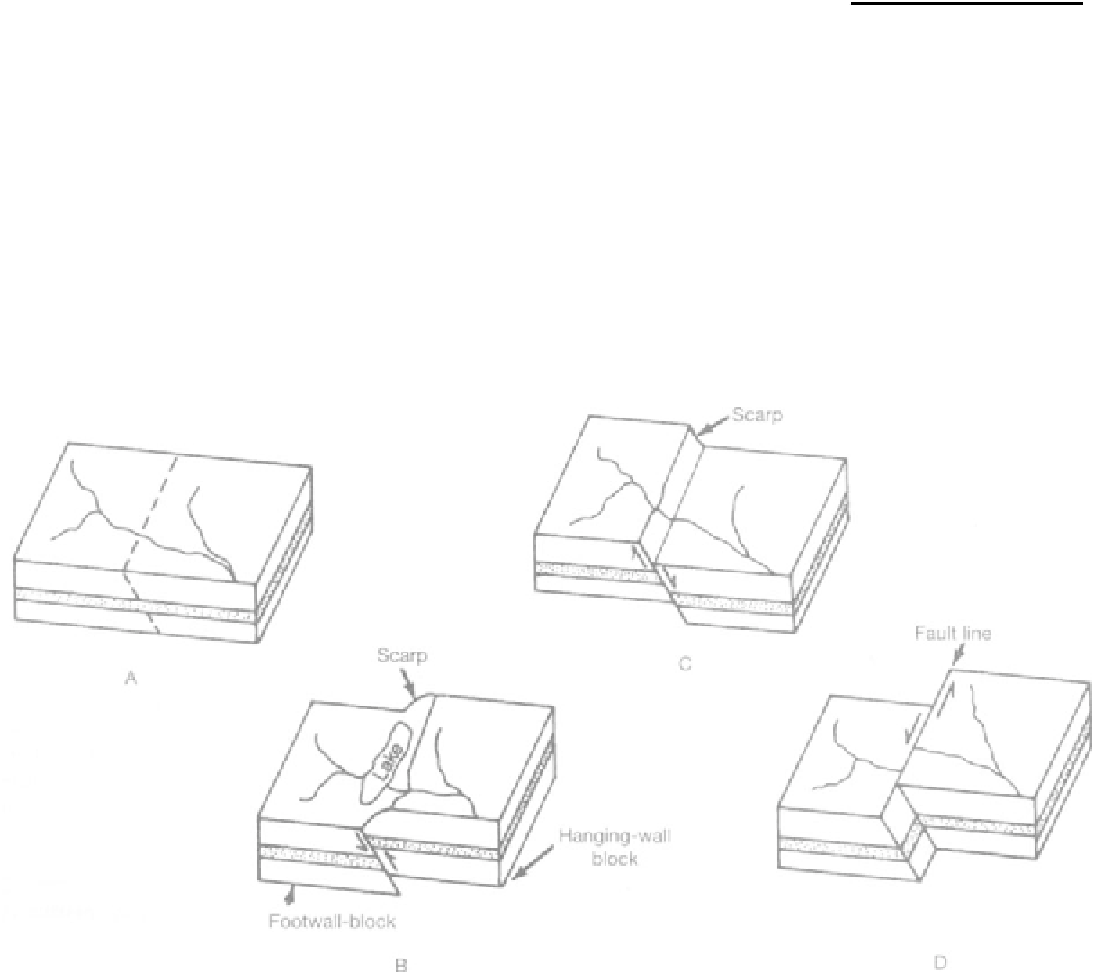Geology Reference
In-Depth Information
92
II. Introduction to Geologic Hazards
7.
The Mississippi Valley is indicated as a high-risk area
because of earthquake activity that is associated with stress
within the continental lithospheric plate. Consider the types
of plate margins in the plate tectonics model to answer the
following questions. (See a geology text for basic details on
plate margins.)
a.
What is the tectonic explanation for the major shaking
hazard in southern California?
are (1) scarps (cliff or break in slope) formed by
horizontal or vertical movement; (2) steep mountain
fronts; (3) offset streams and ridges; (4) sag ponds
and lakes; (5) lineaments of vegetation; (6) valleys in
fault zones; (7) changes in rock type, structure, mois-
ture, and vegetation and (8) faceted spurs. These fea-
tures are shown in Figure 6.7, which depicts a
strike-slip fault (largely horizontal displacement).
Normal faults also can have distinct features, which
are illustrated in Figure 6.8.
b. What is the tectonic explanation for the major shaking
hazard around Seattle?
QUESTIONS (6, PART B)
Fault Diagrams
1.
The freshly exposed cliff of bedrock or regolith along a
fault line is known as a fault
PART B. FAULTS AND FAULT DETECTION
Earthquakes are related to movements along fault
zones. Diagrams of several types of faults are shown in
Figure 6.6. If necessary, the review questions in this
portion of the exercise may be answered with the aid
of a standard introductory geology textbook.
Fault zones can be recognized on aerial pho-
tographs, satellite and LIDAR images, geologic maps,
and topographic maps, as well as by field observa-
tions. Features that might indicate a fault zone area
.
2.
Following an earthquake, the horizontal distance
between two utility poles on opposite sides of a fault trace
(not a strike-slip fault) had increased. Are the regolith
(soils) and bedrock in this area in a region of compression
(squeezing together) or tension (pulling apart)? Explain
your reasoning.
FIGURE 6.6
Types of fault movement: (a) block before movement; (b) reverse fault, or thrust fault, in which the hanging-wall block
has moved up relative to the footwall block; (c) normal fault, in which the hanging-wall block has moved down relative to the foot-
wall block; (d) strike-slip fault, in which the blocks on either side of the fault have moved sideways past each other. Arrows indicate
relative motion of the blocks.
(Modified in part from McKenzie, Pettyjohn, and Utgard, 1975)

